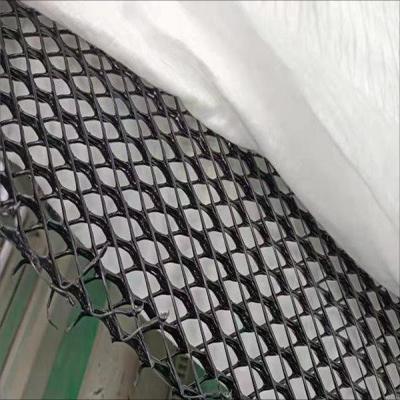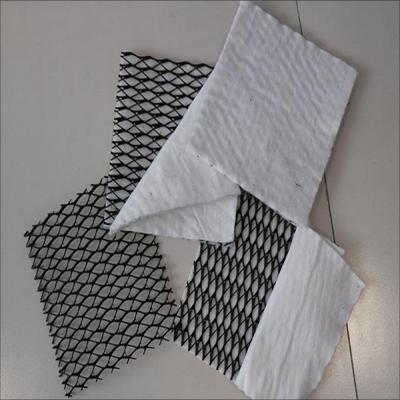The three-dimensional composite drainage net has good drainage performance, tensile strength and durability, and is often used in projects such as roads, railways, tunnels and landfills. So, can it be dismantled?
1. Technical feasibility analysis
The three-dimensional composite drainage net is a three-dimensional mesh structure made of high-density polyethylene (HDPE) material, and is composited with geotextile to enhance its anti-filtration, drainage and protection functions. When it is installed, it is generally installed by hot-melt welding, nylon buckle connection or suturing to ensure the close connection between the materials. From a technical perspective, the following factors should be considered when dismantling the three-dimensional composite drainage net:
1. Connection method: For materials connected by hot-melt welding or nylon buckles, professional tools should be used to cut or untie the connection points during dismantling, which may cause certain damage to the materials.
2. Material strength: HDPE material has high tensile strength and toughness. If the operation is improper during the dismantling process, it may cause the material to break or deform, affecting the secondary use.
3. Environmental conditions: In a humid, low-temperature or compact soil environment, the difficulty of dismantling may increase, and a more sophisticated construction method should be adopted.
2. Assessment of demolition impact
The demolition of the three-dimensional composite drainage network not only involves technical operations, but also the assessment of its impact on the engineering structure and the environment:
1. Structural stability: The three-dimensional composite drainage network often undertakes multiple functions such as drainage, isolation and reinforcement in the project. After demolition, if alternative measures are not taken in time, it may lead to a decrease in foundation bearing capacity, road surface water or structural damage.
2. Environmental impact: In environmental protection projects such as landfills, the three-dimensional composite drainage network also undertakes the function of leachate collection and drainage. Improper demolition may cause leachate leakage and pollute soil and groundwater.
3. Cost-effectiveness: The demolition and reinstallation of the three-dimensional composite drainage network requires a lot of manpower, material resources and time costs. If there is no clear alternative plan after demolition, it may cause a waste of resources.
III. Discussion of alternatives
In view of the risks and costs that may be brought about by the removal of the three-dimensional composite drainage network, in most cases, the following alternatives are recommended:
1. Reinforcement and repair: For the three-dimensional composite drainage network whose performance has declined due to aging or damage, local reinforcement, repair or replacement of damaged parts can be used to extend its service life.
2. Add auxiliary drainage system: On the basis of the existing three-dimensional composite drainage network, add auxiliary drainage pipes or blind ditches to improve the overall drainage capacity and meet the new needs of the project.
3. Optimize maintenance management: Strengthen the daily maintenance and monitoring of the three-dimensional composite drainage network, discover and deal with potential problems in a timely manner, and ensure its long-term stable operation.
As can be seen from the above, the three-dimensional composite drainage network is a key material in modern infrastructure construction. When it is removed, it is necessary to carefully evaluate the technical feasibility, removal impact and alternatives. In most cases, engineering problems can be solved and unnecessary demolition and reconstruction can be avoided through reinforcement and repair, adding auxiliary systems or optimizing maintenance management.
Post time: Jul-16-2025





